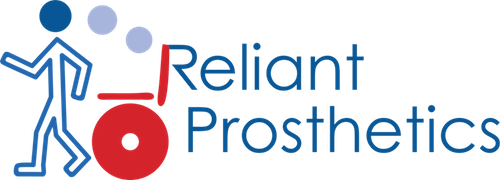Glossary of Prosthetic Terms
Atrophy – decrease in the mass of a muscle, partial, or complete
Bilateral Amputee – amputations to both legs
Definitive Prosthesis – the device replacing a missing limb that’s designed for long term comfort, fit, alignment, function, cosmetic appeal, and durability.
Devotee – a person who is sexually attracted to the disabled.
Edema – the medical term for swelling
Energy Storing Foot – a prosthetic foot designed to store and release energy, like a spring
K Levels – a system created by Medicare, also used by most insurance companies, to categorize the functional levels of amputees.
Functional Level 0 (K0) – the patient does not have the ability or potential to ambulate or transfer safely with or without assistance and a prosthesis does not enhance quality of life or mobility.
Functional Level 1 (K1) – the patient has the ability or potential to use a prosthesis for transfers or ambulation on level surfaces at fixed cadence. This is typical of the limited and unlimited household ambulator.
Functional Level 2 (K2) – the patient has the ability or potential for ambulation with the ability to traverse low level environmental barriers such as curbs, stairs or uneven surfaces. This is typical of the limited community ambulator.
Functional Level 3 (K3) – the patient has the ability or potential for ambulation with variable cadence. This is typical of the community ambulator who has the ability to traverse most environmental barriers and may have vocational, therapeutic or exercise activity that demands prosthetic utilization beyond simple locomotion.
Functional Level 4 (K4) – the patient has the ability or potential for prosthetic ambulation that exceeds basic ambulation skills, exhibiting high impact, stress or energy levels. This is typical of the prosthetic demands of the child, active adult or athlete.
Knee Flexion Contracture – inability to fully straighten the knee
Physical Therapy – the treatment of disease, injury, or deformity by physical methods such as massage, heat treatment, and exercise rather than by drugs or surgery.
Preparatory Prosthesis – the temporary prosthetic device that is used after surgery. It is generally not a finished prosthesis and is designed to last three to six months
Prone Position – lying flat, face down
Prosthesis – an artificial device that replaces a part of the human body (plural is prostheses)
Prosthetic Liner – the protective interface worn directly over your residual limb
Prosthetic Socks – cotton, wool, or acrylic blend socks worn on the residual limb or over the prosthetic liner to accommodate changes in limb volume.
Prosthetist – a medical professional specifically educated and trained in the design, construction, fitting, and maintenance of prostheses (prosthetic limbs).
Residual Limb – the remainder of a limb (arm or leg) after an amputation
Shrinker Sock – elastic socks designed to reduce swelling and help shape your residual limb
Socket – the component of the prosthetic device in direct contact with your body, the shell that encases your residual limb.
Sound Limb – non-amputated side
Suspension – how your residual limb stays in your socket.
Tissue Shaping – preparing your residual limb to fit into a prosthesis
